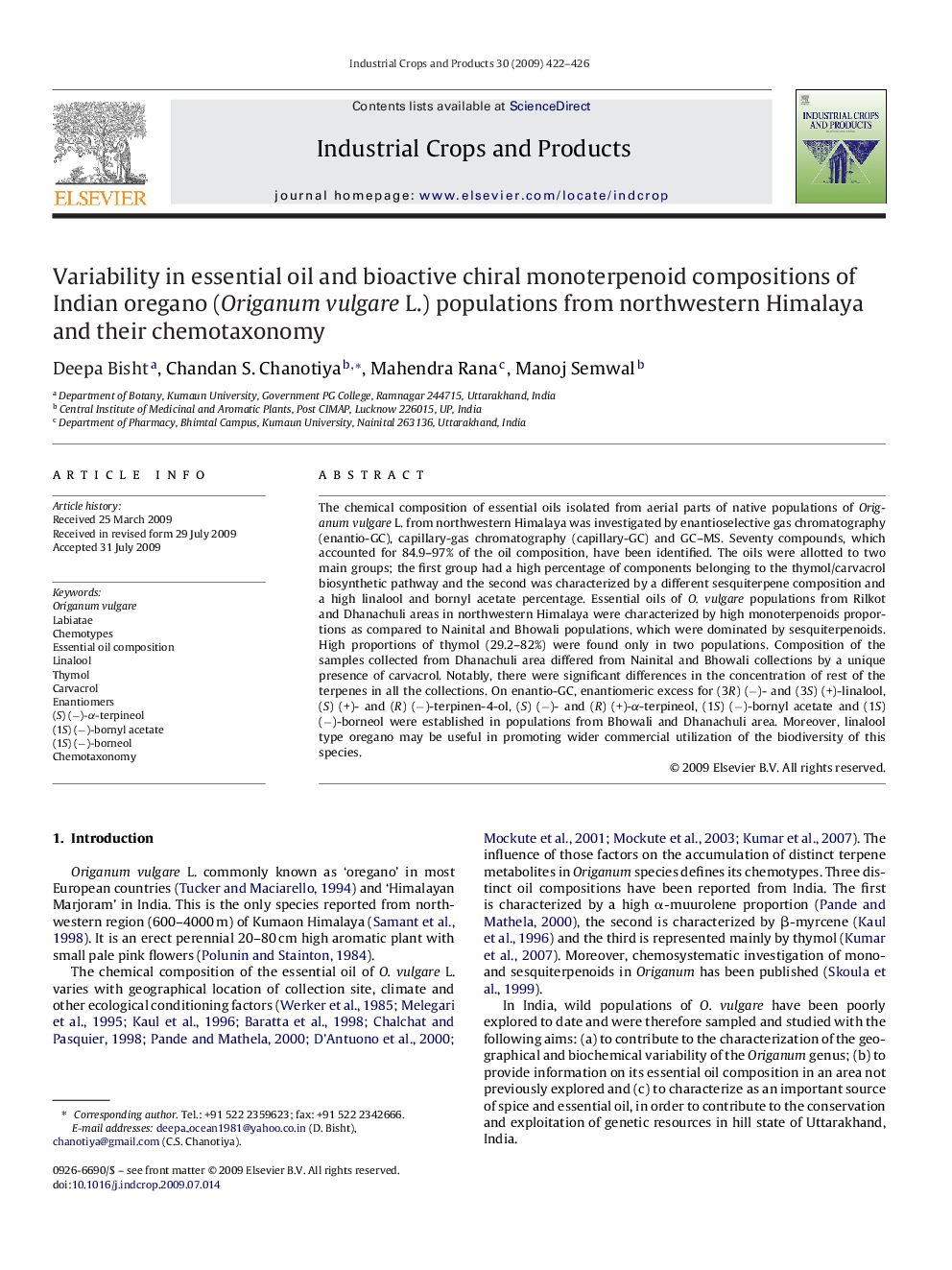| Article ID | Journal | Published Year | Pages | File Type |
|---|---|---|---|---|
| 4514848 | Industrial Crops and Products | 2009 | 5 Pages |
The chemical composition of essential oils isolated from aerial parts of native populations of Origanum vulgare L. from northwestern Himalaya was investigated by enantioselective gas chromatography (enantio-GC), capillary-gas chromatography (capillary-GC) and GC–MS. Seventy compounds, which accounted for 84.9–97% of the oil composition, have been identified. The oils were allotted to two main groups; the first group had a high percentage of components belonging to the thymol/carvacrol biosynthetic pathway and the second was characterized by a different sesquiterpene composition and a high linalool and bornyl acetate percentage. Essential oils of O. vulgare populations from Rilkot and Dhanachuli areas in northwestern Himalaya were characterized by high monoterpenoids proportions as compared to Nainital and Bhowali populations, which were dominated by sesquiterpenoids. High proportions of thymol (29.2–82%) were found only in two populations. Composition of the samples collected from Dhanachuli area differed from Nainital and Bhowali collections by a unique presence of carvacrol. Notably, there were significant differences in the concentration of rest of the terpenes in all the collections. On enantio-GC, enantiomeric excess for (3R) (−)- and (3S) (+)-linalool, (S) (+)- and (R) (−)-terpinen-4-ol, (S) (−)- and (R) (+)-α-terpineol, (1S) (−)-bornyl acetate and (1S) (−)-borneol were established in populations from Bhowali and Dhanachuli area. Moreover, linalool type oregano may be useful in promoting wider commercial utilization of the biodiversity of this species.
